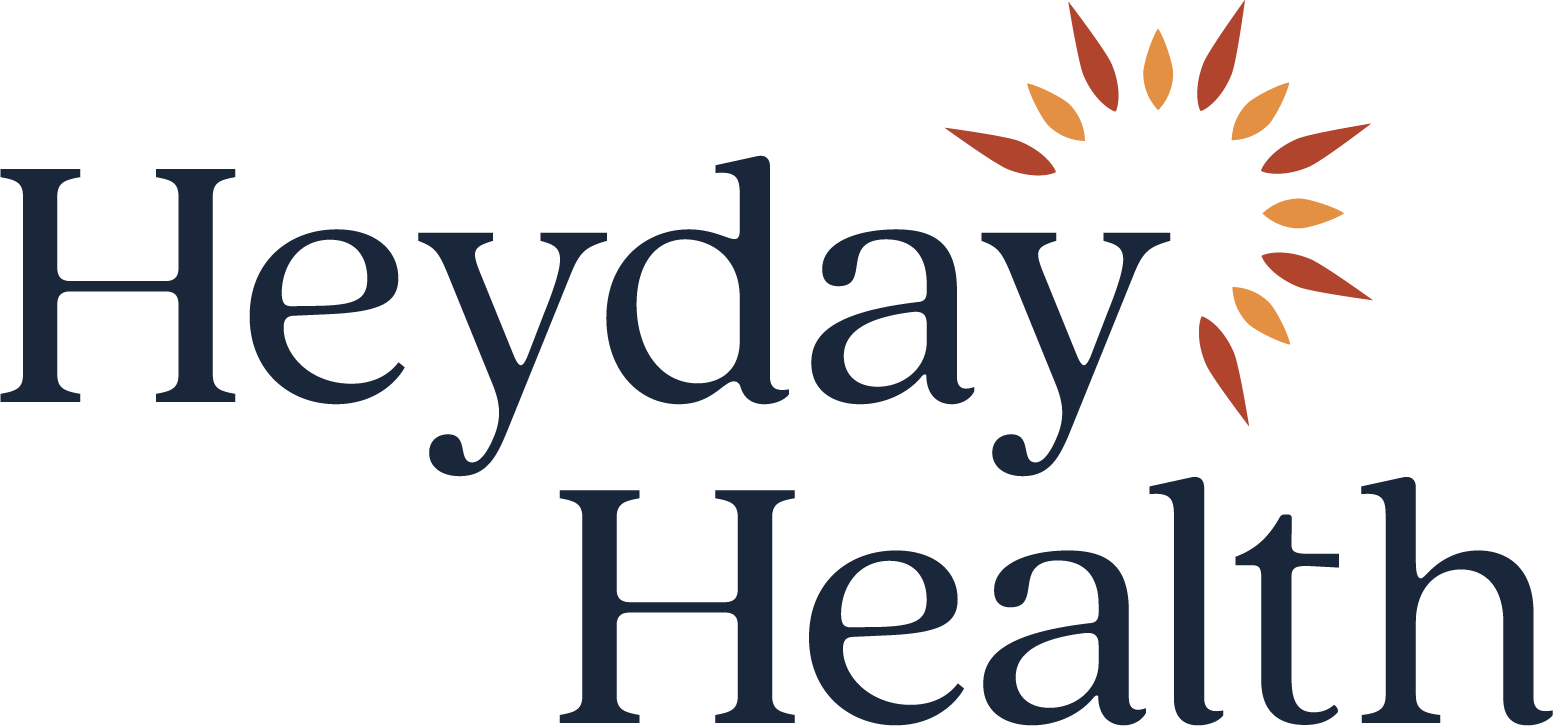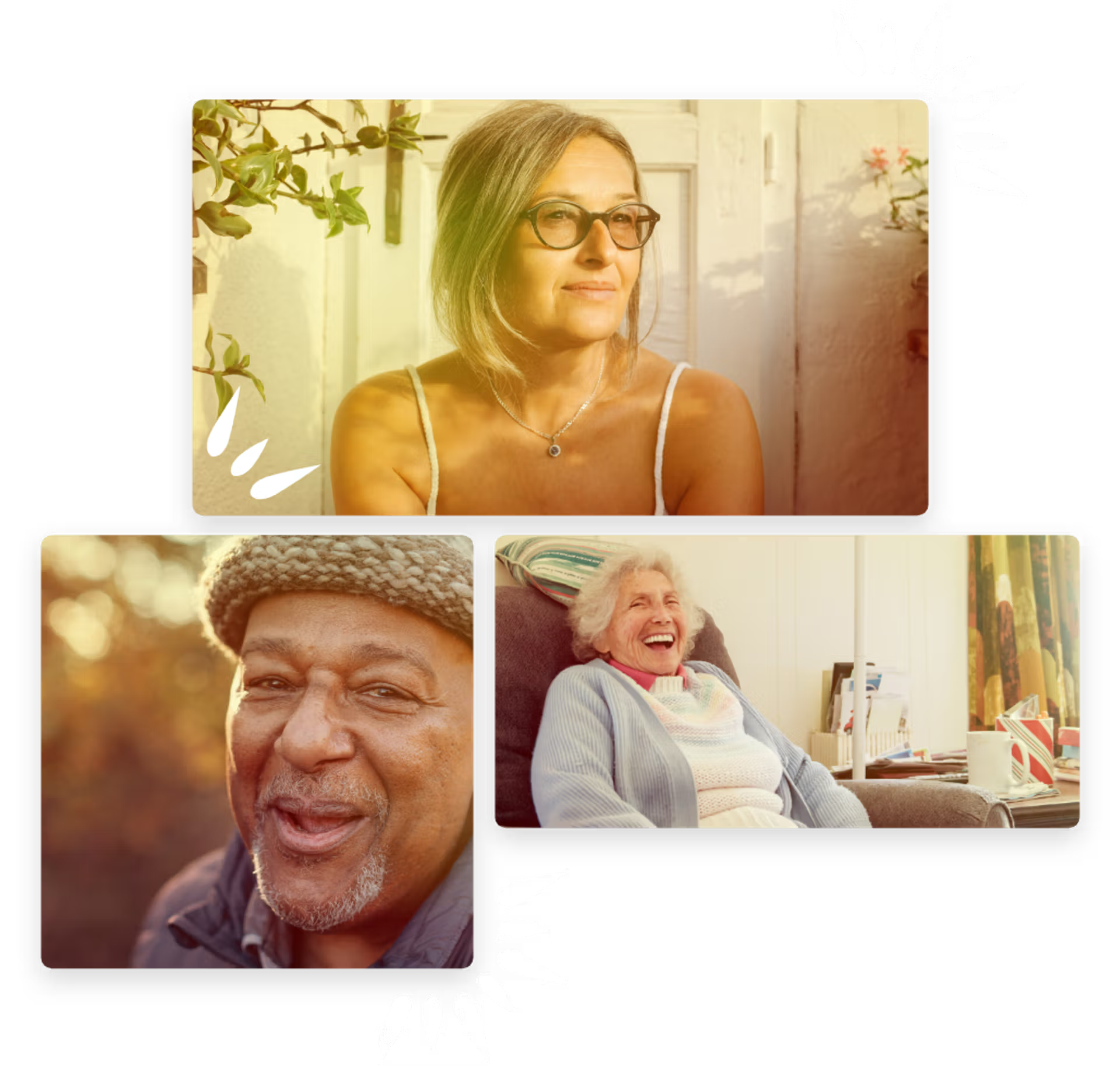CLIENTHeyday Health — a primary care provider for adults on Medicare
Designing beyond the screen for Medicare patients.
How user research led to designing a phone-first care model that reduced no-shows and expanded access to care for digitally disengaged older adults.
UX RESEARCH ⦿ UX + SERVICE DESIGN ⦿ PRODUCT STRATEGY ROLELed user research & testing, experience and interaction design, service design (in collaboration with clinical and ops), visual design
TL;DR
Context
Heyday Health is a growing, early stage virtual-first primary care provider serving Medicare patients. Many of its patients are rural, low-income, mobility-impaired, and/or unfamiliar with digital technologies.
The Challenge
High virtual follow-up appointment no-show rates were limiting care access and continuity.
Solution
Through user research and cross-functional collaboration, we uncovered that many patients preferred, and were only reachable through, phone calls. This insight led to the design and implementation of a phone-first care pathway, significantly reducing no-shows, expanding access, and saving Heyday time and money.
Impact
Reduced no-shows among phone-first users
Increased patient retention, engagement, and satisfaction
Clinical staff has more time to focus on care
A scalable dual-channel model now core to Heyday’s operations
STEP ONEThe challenge
Our medical director came to me a problem. As the company expanded to new regions, our “no show” problem for follow-ups seemed to be growing as well. No-shows meant worse patient outcomes, time wasted for our clinical team, and missed appointments are not billable to Medicare.
While a hybrid in-home and virtual care model on paper should serve an older patient population with complex health and mobility needs well, something wasn’t working.
27%
no-show rate for virtual follow-up appointments.
STEP TWOResearch questions and methods
To understand why patients were missing appointments and struggling to engage, I conducted mixed-method user research in collaboration with the clinical and product teams. Research included:
-
Interviewed 25 No-Show patients across tech literacy and health complexity
-
Tested the MyHeyday patient portal with active patients and target demographics on desktop, tablet, and smartphone experiences.
-
Integrated a patient survey conducted by our clinical staff at the first appointment to better understand and track what devices they are using, their scheduling and reminder preferences, and other people involved in their care.
-
Created user archetypes based on
1) patient’s health complexity as defined by the clinical team
2) patient’s ability to manage health (struggling or coping)
3) high vs low tech savviness.
This could also be used as a rubric for determining at the intake appointment the intensity of ongoing care needed.
Outside of answering why people weren’t showing up to appointment, we were also looking for signal on…
Should we invest in building a native app with push notifications?
Should we give all our patients tablets?
Do we need to train our patient’s to use the technology?
Will virtual care work for this group at all?
STEP THREEInsights
Research revealed a disconnect between the digital-first care model and the on-the-ground realities of patients’ lives. Some patients were not going to use an app or their email.
Patient’s who had not shown up for the their appointments overwhelmingly preferred phone calls and had digital-touchpoint access issues preventing them from regularly receiving follow ups, reminders, patient portal messages and more.
For many low-income, older adults with complex health situations, even the most “accessible” digital solutions weren’t realistic. They preferred (and trusted) phone-based interactions. Training didn’t help if the underlying discomfort or unfamiliarity remained.
87% of patients preferred phone calls as their primary mode of communication.
Many patients felt most supported when they could call and reach a real human — not a portal or call center.
SMS was widely used and understood — more than email or portal messages.
Insight: For some people, patient portals and video-based care created more friction, not less.
Many patients had difficulty switching between tabs, apps, and portals during virtual visits — some spent 15–20 minutes trying to join a Zoom appointment.
Pop-up blockers and small screen sizes created invisible errors that went unaddressed.
Even patients with smartphones found the process confusing or stressful.
Insight: Care is often shared and requires multiple communication touch points between multiple people.
70% of patients had a caregiver involved in some way (family/friend, professional, or both).
Over half were not their own primary contact, making portal-based communication complicated and incomplete.
Patients living with others or with high mobility needs often relied on shared decision-making.
Placeholder for image
“They answer the phone and someone helps me. That’s the most important thing.”
“Even when something’s small, it helps to talk to someone. I don’t want to log in just to ask a question.”
“It took me 20 minutes just to figure out how to join the Zoom. By the time I got in, I was already frustrated.”
“I don’t know what happened. The screen went blank and I thought I broke it, so I hung up.”
“I think my daughter signed up for the portal but I never got anything about a follow-up. Maybe I missed the email or maybe it went to my daughter? I don’t know.”
Insight: Phone was not a fallback. It was the primary access point for trust and continuity.
STEP FOURSolution: Integrating a phone-first user journey to expand trust and access.
Two truths emerged: Sometimes no amount of seamless, intuitive design will get someone to use your technology product. And our patient population desperately needs better care.
Solution 1
Created a new phone-only service pathway in collaborated with ops and clinical teams.
Designed a member care booklet given at first appointment for analog tracking. Two tracks are offered - low tech (those who may use the patient portal with support), and phone-only (patient only communicates with us through calls and text).
Placeholder for new flow chart of new service tracks.
Solution 2




